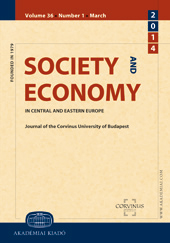Secular Stagnation: What the Debate is About?
Secular Stagnation: What the Debate is About?
Author(s): Gergely HudeczSubject(s): Supranational / Global Economy, Economic history, Economic policy, Economic development, Financial Markets
Published by: Akadémiai Kiadó
Keywords: growth; hysteresis; interest rate; saving; investment; stagnation;
Summary/Abstract: In the aftermath of the 2008 financial crisis, the recovery in economic activity has been weak and much of the academic and policy discussions seek to explain this sluggish growth. This literature review presents how the secular stagnation hypothesis re-emerged in 2013 and evolved over time. It identifies its key tenets, its most contentious points and its most important critiques. Secular stagnation has different interpretations, which complicates the debate, and the objective of this paper is to clarify the demarcation lines between various theories and to show how some of them amalgamated over time. The secular stagnation hypothesis links weak growth to a decline in natural interest rates. Most observers agree that natural interest rates have indeed declined over the past decade and may be in negative territory. However, there are diverging views about the factors which led to negative interest rates and how lasting their impact is likely to be. The secular stagnation hypothesis points to various fundamental factors and suggests a long-term effect, while the global savings glut and debt super-cycle concepts assume only a temporary impact and anticipate that global economic growth and real interest rates will eventually rebound.
Journal: Society and Economy. In Central and Eastern Europe ǀ Journal of the Corvinus University of Budapest
- Issue Year: 39/2017
- Issue No: 1
- Page Range: 125-140
- Page Count: 16
- Language: English

